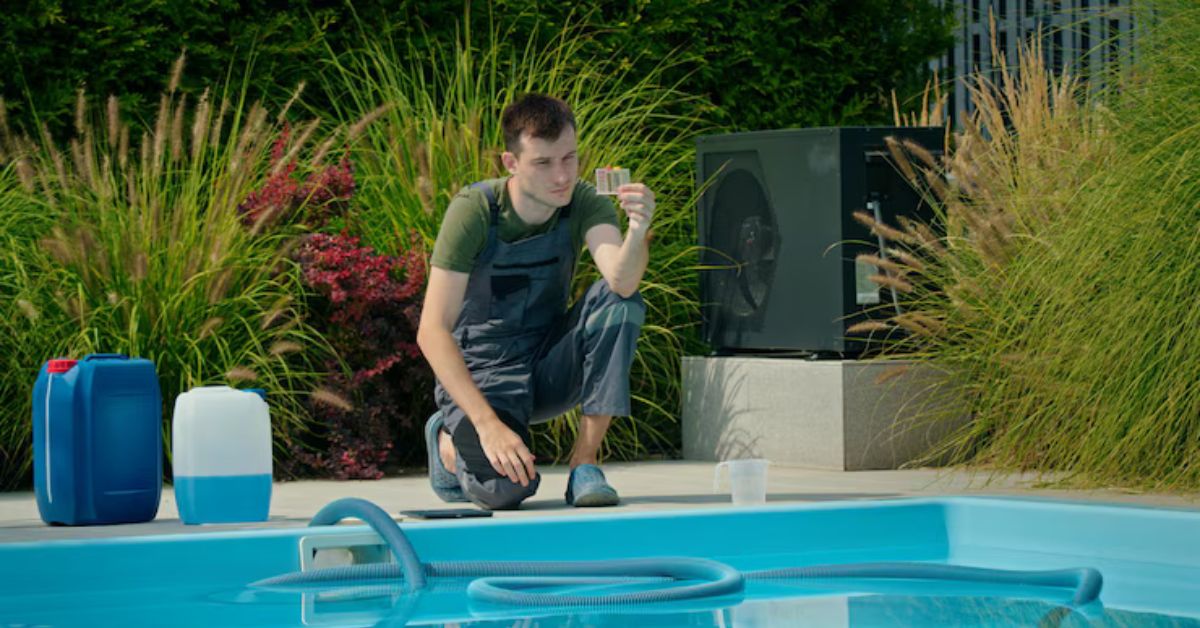Water conservation is a hot topic these days, and for good reason. According to the United Nations, over 2 billion people reside in countries with high water stress, and this number is expected to rise in the coming years.
The scale of the crisis can feel overwhelming. And while we all try to do our part by taking shorter showers and watering our lawns less, there’s a hidden water waster that could be lurking right in your backyard: a leaking pool.
Undetected pool leaks can waste a staggering amount of water. In fact, a single leaking pool can lose thousands of gallons of water each month.
How Much Water Are We Talking About?
It’s easy to dismiss a small pool leak as no big deal, but the amount of water wasted can add up really quickly. Leaks lose just 1/8 inch of water per day – it doesn’t seem like a lot, but over a month, that tiny leak can waste over 1,000 gallons of water. To put that into perspective, 1,000 gallons is enough to:
- Fill a typical bathtub over 13 times
- Wash 40 loads of laundry
- Take 50 showers
- Provide drinking water for a family of four for a month
And that’s just one pool. Imagine the impact of multiple leaking pools in a neighborhood or community. If 20 homes in your area had a leaking pool, that would add up to over 20,000 gallons of water wasted in a month.
The Ripple Effect of Water Waste
In areas that are already grappling with drought or water scarcity, the added strain of pool leaks can exacerbate an already dire situation. Communities may be forced to implement strict watering bans or invest in costly infrastructure upgrades to keep up with demand.
Moreover, when pool water seeps into the surrounding soil, it can carry chemicals like chlorine and other pool treatments with it. These chemicals can harm delicate ecosystems and contaminate groundwater sources, further exacerbating the environmental impact.
Fortunately, there’s a simple solution to the problem of pool leaks: regular leak detection and repair.
Leak Detection to the Rescue
Professional leak detection services use advanced technology and techniques to quickly pinpoint the source of a leak:
- Visual Inspection: Checking for visible cracks and damage
- Dye Testing: Using colored dye to track water movement
- Pressure Testing: Identifying leaks in hidden plumbing
- Electronic Detection: Using sound equipment to pinpoint escape points
By catching and repairing these leaks early, homeowners can significantly reduce their water waste and minimize the impact on their community’s water resources.
Scheduling an inspection with a company like Florida Leak Locators is a great way to take control of your pool’s water usage and contribute to larger conservation efforts. By proactively addressing leaks, you can:
- Save thousands of gallons of water monthly
- Reduce your water bills and avoid costly utility overages
- Protect your community’s limited water resources
- Extend the life of your pool and prevent expensive repairs down the line
- Set a positive example for your neighbors and encourage others to prioritize conservation
Signs of a Leak and When to Call
Time to get familiar with the common signs so you can take action immediately. One of the most obvious indicators is rapid water loss. If you notice that your pool loses more than ¼ inch of water everyday, it’s a strong sign that there might be a leak. While it’s normal to lose some water to evaporation, especially in hot and dry climates, excessive water loss is a red flag that should not be ignored.
Another telltale sign is the presence of wet spots or soggy areas around your pool. If you notice that certain areas of your landscaping are consistently damp or muddy, even when the rest of your yard is dry, it could be that water is escaping from your pool and seeping into the surrounding soil. This doesn’t just waste water but it can also result in erosion and damage to the pool’s foundation over time.
Cracks and gaps on the surface are also another culprit. As pools age and are exposed to the elements, it’s not uncommon for the surface material to deteriorate. This creates cracks and fissures that allow water to escape. If you have a tiled pool, check for tiles that are no longer attached to the pool surface. Water can seep behind these and cause them to become loose or fall off entirely.
Finally, an unexplained increase in your water bill can be a sign that a leak is driving up your usage. If you notice a sudden increase in your bills and you know you haven’t changed your watering habits, a pool leak may be the cause.
If you catch any of these signs, take action immediately. The longer a leak persists, the more water is wasted, and the greater the possibility that your pool and its surrounding structures will be damaged. This is why it’s so important to get regular inspections and immediate repairs. When you have a consistent maintenance schedule throughout the year, you can catch leaks early.
You also want to be mindful of the seasons. In spring, prioritize inspecting your pool cover and checking for cracks that may have formed during winter, especially if you live in an area with freezing temperatures. Summer brings its own challenges, as peak usage combined with high temperatures can mask water loss from leaks. You can monitor water levels weekly by marking the water line, and checking it.
Small Actions, Huge Impact
As we’ve seen, pool leaks can significantly impact water conservation efforts, both at the individual and community levels. By being proactive about detecting and repairing them, pool owners can save water and money and help protect the environment.
You can also share your own experiences and knowledge about pool leak detection with others. Encourage them to take similar steps to save water. Together, we can work to keep our pools and our communities thriving, one leak at a time.







